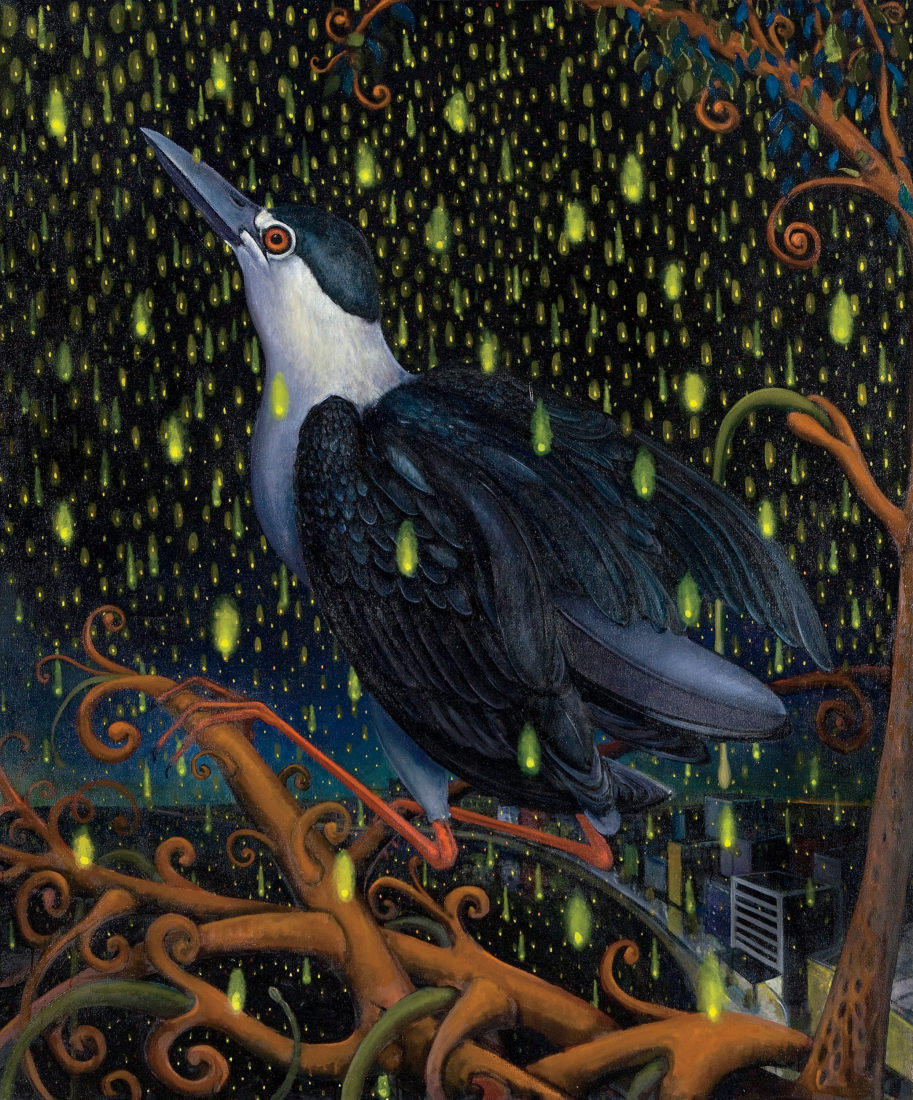The brilliantly plumed birds in Ed Smith’s paintings do not look at ease. They’re huddled together defensively, often in tight clusters—intertwined masses of wings, spindly legs, tail feathers, and snaking, craning necks. Their eyes are on high alert, as if scanning for unspecified threats. Something is rotten in the peaceable kingdom.
“Somebody very astutely called his work ‘apocalyptic Audubon,’” says Leslie-Claire Spillman, director of New Orleans’ Soren Christensen Gallery, which represents Smith and has mounted several exhibitions of his large-format oils. “I think it’s wholly allegorical. It shows the struggle between the natural world and the ever- encroaching human presence.”

“That was the spark that initially set them off,” Smith says of his paintings. The fifty-three-year-old artist, who grew up on Cape Cod, migrated to Baton Rouge, Louisiana, in the late 1990s, when he became an art professor at Louisiana State University. “When I moved to Louisiana, I was amazed at the bird life,” he says. “They’re just everywhere. That kind of nature that was really mashed up against chemical plants and oil refineries; when the sun is setting on an oil refinery, and there are birds in a rain puddle in front of it…that can be a metaphor for lots of things.” Exhibitions of Smith’s work have hung in galleries throughout the South and beyond; this fall, a show at Soren Christensen will open in November, coinciding with a solo display of his paintings at the Appleton Museum of Art in Ocala, Florida, which will run through December.
Sometimes the precarious circumstances of the birds Smith depicts seem obvious: In an oil on canvas called Fall Out (Night Heron), the subject perches on curlicue branches as ominously glowing oobleck rains out of a black sky. In End of Eden, a mix of avians pose in bare trees over a ghastly yellow wetland; in this garden, the serpents clearly have the upper hand. In other compositions, the narrative is subtler and more open to interpretation. In the six-by-eight-foot painting Long March, a mass of several dozen gorgeously colored birds appears to be heading somewhere in unison, focused on a common purpose. The effect is both comical and a bit eerie: If it’s a long march to extinction they’re on, they look determined to not go quietly. “It seems pretty clear that it’s an unnatural state,” Smith says. “They’re coming together to survive, I guess. I don’t want to say, survive from what. They’re just trying to hang on, as best they can. They’re trying to realign.”

Although it is all but impossible to look at Smith’s paintings and not think of Audubon, Smith also cites a mix of other influences, from the abstract expressionist Willem de Kooning to the nineteenth-century Englishman Edward Lear, who is today best known for limericks and whimsical poems like “The Owl and the Pussycat” but who also produced bold illustrations of parrots and other birds. For the most part, Smith’s bird renderings are lifelike and accurate. While painting, he refers to stacks of field guides, magazines, and other source materials, and he frequently lights out in his kayak to jot down field notes and quick sketches. But he feels no obligation to make his paintings ornithologically correct. “A lot of the birds I paint are not real species,” he says. “A lot of them are kind of made up.” He’s not above pinning a fan of peacock feathers on a homely-looking vulture, for example, or sneaking some blue Twitter logos in among more conventional tweeters.
“I think the viewer is confronted,” Spillman says, “and implicated in the birds’ plight. These are themes that definitely resonate down here, and I think the buzz around his work is growing.”
>For more information on the exhibits, go to sorengallery.com and appletonmuseum.org.








